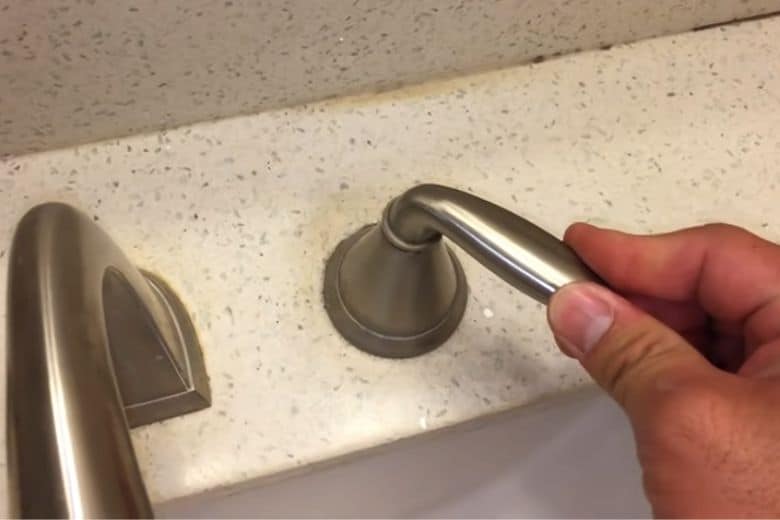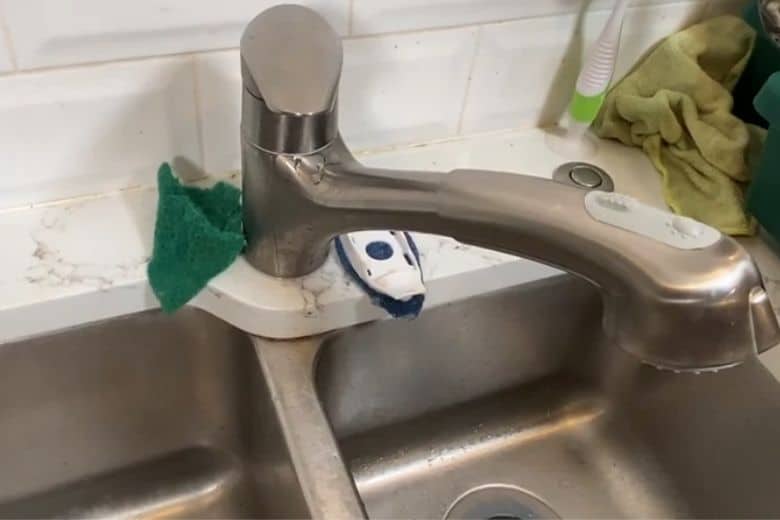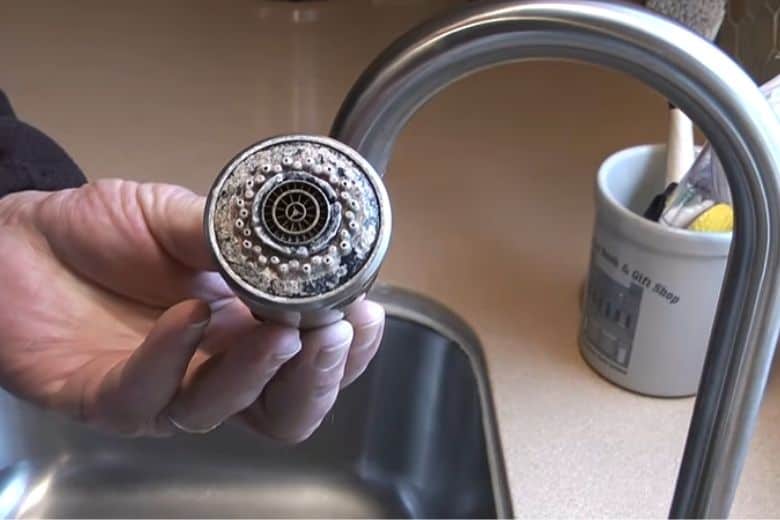Some household things smoothen our everyday life. If they run well, we forget about them and realize their importance only when they stop working or create problems. A faucet handle is such a thing. As you are here, you have a problem with your bathroom faucet handle. Please spend a few minutes reading our article on the bathroom faucet handle hard to turn; you will get the desired solution.
You must find this problem’s main catalysts to get the proper solution. Then comes the phase of practical steps. First, put off the faucet and intercept all parts. Next, use plumber grease, vinegar, and baking soda with a cloth piece and brush. Then reinstall the faucet handle. That’s it you need.
We are going to present a complete solution for stiff faucet handles. By the end, you will learn how a faucet handle gets hard, the causes behind it, and experts’ answers to this. Our solution will require a 0-dollar expense, and you can apply it yourself.
Bathroom Faucet Handle Hard To Turn: Easy Solutions Step By Step
We are providing the most authentic solution to hard-to-turn faucet handles. If you follow it correctly, you will succeed because we give industry-leading experts answers.
Why Is A Bathroom Faucet Handle Hard To Turn?
Experts suggest that to find a complete solution to a problem, you must know it from top to bottom. For example, when a faucet becomes hard to turn, many causes work behind it. You might not get all the reasons at a time. But one or more reasons may be hidden behind it. We can define the leading causes by naming them O-ring or gasket damage, lifespan, white calcium buildups, rub, cleaning with chemicals, etc.
Let’s discuss leading 5 points to get full clarification.
1. O-Ring or Gasket Damage
You will find an o-type rubber ring in the faucet’s inner section. This ring can fit the faucet parts tightly and provides proper support until it remains undamaged. When it starts to get damaged, the faucet handle tends to be stiff. The more days will pass in this condition, the problem will deteriorate. In addition, the faucet handle will become too hard to move if the gasket gets damaged.
2. The Lifespan of the Faucet Handle
A faucet is a complete set of a few parts. There are screws, gaskets, valves, and other things. The functionality of the faucet depends on the entire set. If a part of the faucet meets its lifespan, it will create problems. For example, there will be no way if the inner part of the main body gets decayed or broken. Somehow you fail to manage the correct replacement of the broken parts; your faucet handle or whole faucet set will stop working gradually.
3. White Calcium Buildups
Continuous hard water emissions through a water faucet can cause calcium buildups. These white-colored buildups are also responsible for getting the faucet handle harder.
4. Rub On the Inner of the Faucet
To run and stop the water emission, you must move the faucet handle many times a day. Unfortunately, this colossal movement leads the faucet handle to decay. There is no way to stop this movement if you run your faucet. After deteriorating to a certain level, the tap shows problems, increasing gradually. This is one of the significant causes of getting a faucet handle hard to turn.
5. Faucet Valve
The valve of the faucet plays an essential role in its proper functionality. If it gets damaged, problems will arise.
How to Fix a Stiff Faucet Handle?
The final part of our mission is to fix a hard-to-turn faucet handle. There may be one or more problems with your faucet handle or its parts. So, we have to discuss how we can fix a hard-to-run bathroom faucet handle.
The Solution to the White Buildups Problem
If your problem is happening because of white buildups, you can remove this buildup easily. Get a few things in your hand- vinegar, baking soda, a screwdriver, a piece of cloth, and grease. Take off the complete faucet set, mark the white buildup grown areas, then make the whole faucet wet using vinegar. After 10-12 hours, get out the faucet and soak it again with baking soda. Take an unusable brush, press, and move it gently over the faucet. If your problem is with the above issue, you got your solution and if not, follow the next steps.
Solution 1– A Solution to the Inner Friction
Because of usage, pressure, and build quality, you may get friction to the main body of the faucet or faucet handle. In case of excessive friction, the faucet becomes unusable. But, you can use a broken handle with negligible friction by using grease.
Consider a reputed and trustworthy brand name to get a good lifespan, though it may cause more money expense.
Solution 2- Damage to Gasket or O-Ring
A gasket with an o-ring shape helps a faucet to get fit accurately. Unfortunately, because of the left-right movement of the handle, this o-ring gets damaged gradually and causes hardness to the faucet.
Solution 3- Spare Parts
A faucet consists of some different sections. Each of them is significant for handling work. So, if you need to replace any portion, replace it with a good one.
Cautions:
While separating the various sections of the faucet, you must be very careful. You have to switch off both the hot and cold water flow. It’s not mandatory; it will bring a better result. When you have decided to change parts of a faucet, take a picture on your mobile. It will help you when you buy it.
Don’t turn the handle with high pressure or strength. This additional pressure may lead you to break the basin or handle.
Not all the faucets and handles are the same. What type of handle are you using? Make sure it is the same as the previous one. Replacing a part of this section is more important unless you will not get a solution.
Frequently Asked Questions (FAQs):
Why is my faucet handle so tight?
Answer: If the inner parts of your faucet handle get damaged, you might not find a faucet handle working efficiently; sometimes, it becomes harder to move. There may be another cause behind this tightness – your faucet has become unusable because of age.
How do you loosen a stiff faucet handle?
Answer: You can try a spray called WD-40 multi-use products for the easiest solution to loosen your faucet handle. First, remove your faucet handle and keep it in a bowl-like pot mixing with vinegar. Then wait for 10-12 hours. Then use plumber grease on the whole faucet valve. Finally, clean the faucet handle and dry it. Yes, you have completed the process.
What causes white buildup on faucets?
Answer: The white buildup on the faucet is the result of hard water. When water contains various minerals and calcium in it, people call it hard water.
What does calcium buildup look like?
Answer: Calcium buildup is white colored gritty substance. People commonly see this on the water faucet. Calcium buildup makes a composition on the water faucet mouth using a faucet for a long time. Thus, they make their places, and we see the white areas on the faucet.
How do you loosen a calcified faucet?
Answer: Because of hard water, your faucet can get calcified. To remove this and loosen your faucet, you can use baking soda and vinegar. Take a piece of cloth, wet it with vinegar, and make the faucet soaked. Keep the faucet wrapped in the fabric and leave it for 8-10 hours. Now with an old brush and baking soda, clean the faucet again. Now, you have done your work.
Conclusion
We have described all information authentically and provided the possible best solution. Though we and our solutions are effective, the ultimate success depends on you. You must follow the steps correctly and mustn’t make a hurry or use improper instruments or substances. Any unnecessary steps, rush, or inappropriate material use may cause your faucet more damage.
So, if you are not clear yet about our above discussion, read the article “Bathroom faucet handle hard to turn: easy solution.” more times. Are you still need clarity? Leave us a comment detailing your condition. Finally, if you are in an emergency, get help from an expert.
Paul Newman is a blogger who writes about plumbing and home improvement. Over the past 20 years, I have worked as a plumber. My passion is to share my knowledge and experience with others to improve their homes.




